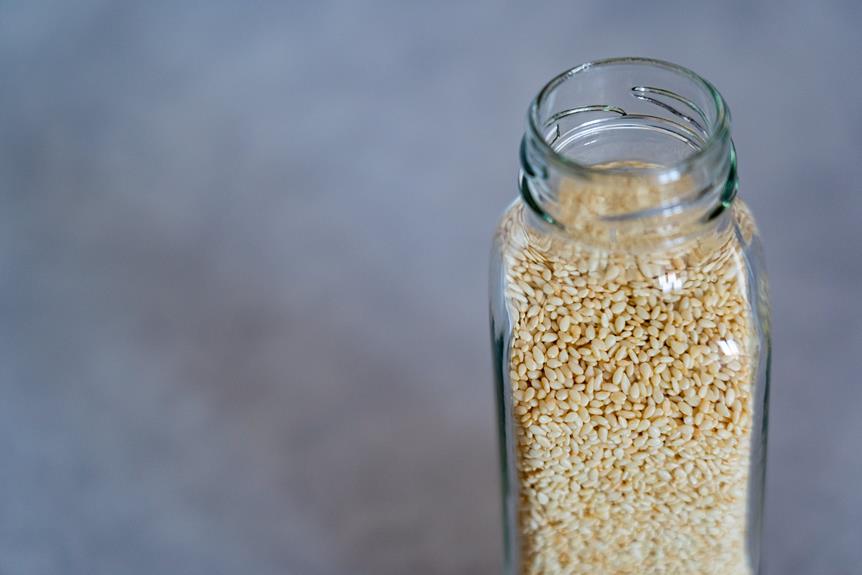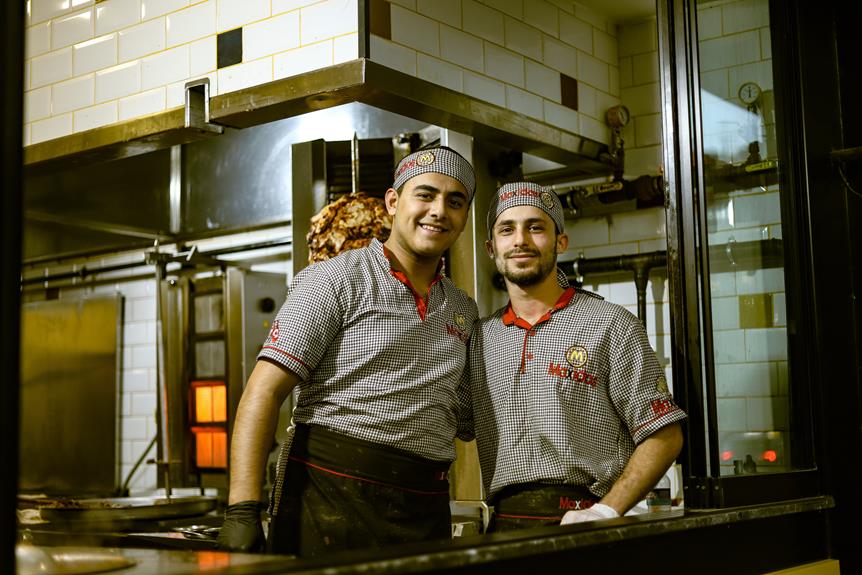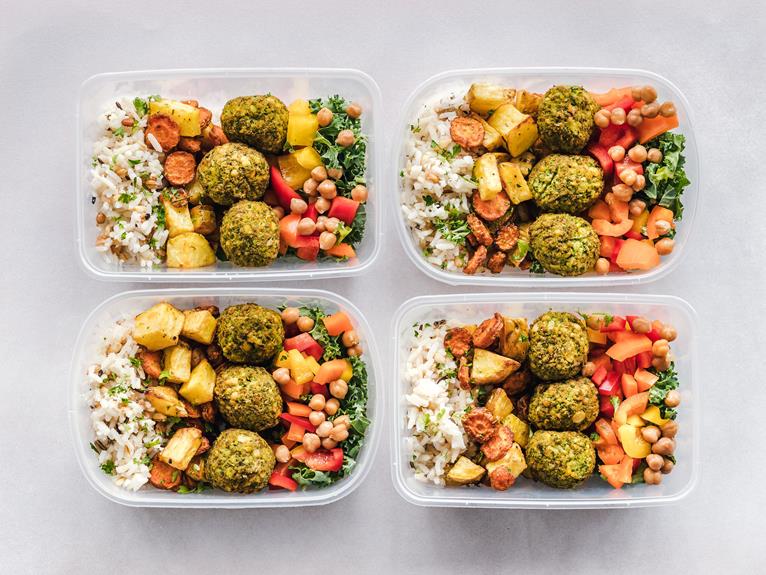In the quest for maintaining a healthy diet amidst a hectic schedule, mastering the art of quick and healthy meal planning is paramount. With the rise of convenience foods and fast-paced lifestyles, it’s easy to overlook the importance of balanced nutrition.
However, by implementing smart meal planning strategies, you can create delicious and nourishing meals in a time-efficient manner. Whether you’re a novice in the kitchen or a seasoned cook seeking fresh inspiration, our comprehensive exploration of quick and healthy meal-planning tips will equip you with the tools to revolutionize your approach to food preparation.
By following these quick and healthy meal-planning tips, you can take control of your meals, make healthier choices, and save time in the kitchen.
Plan Meals in Advance
To make meal planning easier and more efficient, it’s highly recommended that you start by organizing and preparing your meals in advance. Meal prepping is a great way to save time and stick to your healthy eating goals.
Begin by brainstorming some healthy meal ideas that you enjoy and that fit your dietary preferences. Look for recipes that use fresh ingredients and include a balance of protein, carbohydrates, and vegetables. It’s important to incorporate a variety of flavors and textures to keep your meals interesting and satisfying.
Once you have your meal ideas, create a schedule for the upcoming week. Decide which meals you’ll prepare in advance and which ones you’ll cook fresh each day. Make a shopping list of all the ingredients you’ll need and head to the grocery store. Having a well-stocked pantry and fridge will make it easier to stick to your meal plan.
When you have your ingredients, set aside some time to prep and cook your meals. Chop vegetables, marinate meat, and cook grains or pasta ahead of time. Portion out your meals into individual containers or freezer bags for easy grab-and-go options throughout the week.

Set a Weekly Meal Schedule
Create a weekly meal schedule to help you stay organized and on track with your healthy eating goals. Planning your meals for the week is a great way to save time and ensure that you have nutritious meals ready to go. By setting aside some time each week to plan your meals, you can eliminate the stress of figuring out what to cook each day.
Start by making a list of your favorite healthy recipes and ingredients. Then, take a look at your schedule for the week and determine which days you’ll have more time to cook and which days you’ll need quick and easy meals. This will help you plan accordingly and make the most of your time.
Once you have your list of recipes and a schedule in mind, create a weekly meal calendar. You can use a simple spreadsheet or a meal-planning app to help you stay organized. Write down what you’ll be cooking each day, including breakfast, lunch, dinner, and snacks. This won’t only save you time during the week, but it will also ensure that you’re eating a balanced and nutritious diet.
In addition to planning your meals, consider doing some time-saving meal prep. This can include chopping vegetables, marinating meat, or pre-cooking certain ingredients. By prepping ahead of time, you can save time during the week and make cooking a breeze.
Creating a weekly meal schedule and incorporating time-saving meal prep techniques will help you stay organized and on track with your healthy eating goals. So grab your pen and paper, or open up that meal planning app, and start planning your meals for the week. Your body and mind will thank you for it!
Make a Grocery List
When it comes to making a grocery list, it’s important to keep things simple and organized. Here are some tips to help you create an effective grocery list:
- Set a grocery budget: Before you begin, determine how much you want to spend on groceries. This will help you prioritize your purchases and prevent overspending.
- Use a meal planning app: Meal planning apps can be a great tool to help you create your grocery list. These apps allow you to input your planned meals and generate a shopping list automatically.
- Check your pantry and fridge: Take a quick inventory of what you already have at home. This will prevent you from buying duplicate items and ensure you only purchase what you need.
Choose Quick and Easy Recipes
When choosing quick and easy recipes, it’s important to consider your time constraints and culinary preferences to ensure a satisfying and efficient meal preparation experience. We all lead busy lives, and finding recipes that aren’t only quick but also delicious can be a challenge. But don’t worry! We’ve some fantastic ideas for quick and easy recipes that you can try.
One of the best meal prep hacks is to choose recipes that require minimal ingredients and preparation time. Look for recipes that use simple, everyday ingredients that you already have in your pantry. This will save you time and money on grocery shopping.
Another great tip is to opt for one-pot or sheet pan meals. These recipes not only save you time on clean-up, but they also make cooking easy and efficient. Simply throw all the ingredients into one pan or one pot, and let the oven or stove do the rest of the work.
Consider incorporating meal prep into your routine. Spend a few hours on the weekend prepping ingredients, such as chopping vegetables or marinating meat, so that you can easily assemble meals during the week.
Incorporate a Variety of Vegetables
To make your quick and easy recipes even better, it’s important to include a variety of vegetables. This not only adds color and vibrancy to your plate but also provides you with a wide range of essential nutrients.
Here are three ways to include a variety of vegetables in your meals:
- Try different vegetables: Don’t limit yourself to just carrots and broccoli. Venture out and try new and exciting vegetables like kale, Brussels sprouts, or eggplant. Experimenting with different vegetables keeps your meals interesting and ensures you get a diverse range of nutrients.
- Get creative with vegetable recipes: Adding vegetables to your meals doesn’t have to be dull. Try cooking methods like roasting or grilling to bring out the natural flavors of the vegetables. You can also play around with different seasonings and spices to add a burst of flavor. Get creative with recipes like zucchini noodles, cauliflower rice, or stuffed bell peppers to make your meals more exciting and enjoyable.
- Mix and match vegetables: Don’t be afraid to combine different vegetables in your recipes. Mixing and matching not only adds variety but also boosts the nutritional value. For example, you can add bell peppers, onions, and mushrooms to a stir-fry or mix spinach and tomatoes in a salad. By mixing and matching vegetables, you can create delicious and nutritious meals that satisfy your taste buds and keep you feeling satisfied.
Including a variety of vegetables in your meals is a simple and effective way to make your quick and easy recipes even more nutritious and delicious. So, get creative, try different vegetables, and enjoy the benefits of a diverse and colorful plate.
Opt for Lean Protein Sources
It’s important to include lean protein sources in your meals for a balanced and nutritious diet. Choosing lean protein alternatives not only helps maintain a healthy weight but also provides your body with the necessary nutrients for growth and repair.
There are plenty of options when it comes to healthy protein sources.
One excellent lean protein source is skinless chicken breast. It’s low in fat and high in protein, making it a great choice for those watching their weight.
Fish, like salmon or tuna, is another fantastic option. Not only do they provide protein, but they also contain omega-3 fatty acids, which are important for heart health.
If you’re a vegetarian or looking to reduce your meat intake, there are still plenty of lean protein alternatives available. Legumes, such as lentils and chickpeas, are high in protein and packed with fiber and other essential nutrients.
Tofu and tempeh are also excellent plant-based protein sources that can be easily added to your meals.
Prep Ingredients Ahead of Time
If you want to save time and make meal preparation more efficient, consider prepping your ingredients ahead of time. By taking a little time to prep your ingredients in advance, you can streamline the cooking process and have everything ready to go when it’s time to make your meal.
Here are three reasons why meal prepping and ingredient preparation can help you with time management.
- Saves time during busy weekdays: When you have your ingredients prepped and ready to use, you can quickly put together a healthy meal without spending extra time chopping, peeling, or measuring. This is especially helpful on those hectic weekdays when you’re short on time.
- Reduces stress and decision-making: Prepping your ingredients ahead of time eliminates the need to think about what to cook and how to prepare it. This can help reduce stress and make mealtime more enjoyable.
- Encourages healthy eating habits: Having prepped ingredients readily available makes it easier to choose healthier options over unhealthy convenience foods. Meal prepping allows you to have nutritious ingredients on hand, helping you stick to your healthy eating goals.
Use Time-Saving Kitchen Gadgets
Using time-saving kitchen gadgets can significantly simplify your meal preparation process and make cooking quick and efficient. These gadgets are designed to save you time and effort in the kitchen, allowing you to focus on creating delicious and healthy meals for yourself and your loved ones.
Here are some meal prep hacks that you can incorporate into your cooking routine using these time-saving kitchen gadgets:
- Food Processor: Easily chop vegetables, shred cheese, or make homemade sauces and dressings in minutes. This versatile gadget can handle a variety of tasks, saving you precious time and energy.
- Instant Pot: Cook meals quickly using pressure cooking technology, perfect for busy individuals. With the ability to cook food faster than traditional methods, the Instant Pot is a game-changer for those short on time.
- Slow Cooker: Set it and forget it – let your meal cook slowly throughout the day while you focus on other tasks. This gadget allows you to prepare flavorful and tender meals with minimal effort.
- Air Fryer: Enjoy crispy and healthy meals with less oil and faster cooking time. Whether you’re cooking chicken wings or roasted vegetables, the air fryer can deliver delicious results in no time.
- Blender: Make smoothies, soups, and sauces in a flash. The blender’s powerful motor can quickly blend ingredients to the desired consistency, saving you time and effort in the kitchen.
- Electric Can Opener: Open cans effortlessly, saving you time and preventing any accidental injuries. This simple gadget is a must-have for anyone who regularly uses canned ingredients.
Investing in these time-saving kitchen gadgets can make a significant difference in your meal preparation process. Not only do they save time, but they also make cooking more enjoyable and efficient. By utilizing these gadgets, you can spend less time in the kitchen and more time enjoying your delicious, homemade meals with your loved ones.
Cook in Bulk and Freeze Leftovers
Cooking in bulk and freezing leftovers can be a game-changer for your meal preparation process. It’s a time-saving technique that allows you to make multiple meals at once, freeing up more time for activities you enjoy. Plus, it can save you money by buying ingredients in bulk and taking advantage of discounts and sales.
One of the great benefits of cooking in bulk is that it ensures you have healthy meals on hand. By controlling the ingredients in your meals, you can make sure they’re nutritious and well-balanced. When you cook in bulk, you can portion out your meals and freeze them, making it easy to grab a healthy option when you’re short on time or feeling too tired to cook.
Imagine having a freezer stocked with homemade meals that are ready to go whenever you need them. It’s like having your chef. And with the right gadgets and tools in your kitchen, cooking in bulk becomes even easier. Consider investing in a slow cooker or an Instant Pot to make the process even more efficient.
Utilize Meal Delivery Services
Try out meal delivery services for a convenient and time-saving way to enjoy delicious and healthy meals. With the busy nature of daily life, finding time to plan and prepare meals can be challenging. That’s where meal delivery services come in handy.
These services offer a wide variety of pre-prepared meals that are delivered right to your doorstep, taking the guesswork out of meal planning.
Meal delivery services are a great option for those who want to eat healthy but don’t have the time to cook from scratch. They provide balanced and portion-controlled meals, ensuring that you’re getting the nutrients you need without the hassle of meal planning and grocery shopping.
Whether you’re following a specific diet or simply looking for convenient and nutritious options, meal delivery services have got you covered.
When choosing a meal delivery service, consider your dietary preferences and any specific dietary restrictions you may have. Many services offer customizable options to cater to your individual needs. You can select meals that align with your taste preferences and dietary goals, whether that’s vegetarian, gluten-free, or low-carb.
Pack Healthy Lunches for Work
To make sure you have a healthy and satisfying lunch at work, try packing nutritious meals. This not only helps you save money but also gives you control over what goes into your lunch and how much you eat.
Here are some ideas and tips for preparing delicious and nourishing work lunches:
- Exciting Salads: Make your salads more interesting by adding a variety of colorful vegetables, lean proteins like grilled chicken or tofu, and a sprinkle of nuts or seeds for crunch. Try different dressings to keep things tasty.
- Wrap It Up: Instead of regular sandwiches, choose whole wheat wraps or lettuce wraps. Fill them with lean meats, fresh veggies, and a smear of avocado or hummus for extra flavor and nutrition.
- Prep Ahead: Dedicate some time on the weekends to prepare and portion out your lunches for the week. Chop vegetables, cook grains and proteins, and assemble meals in containers. This way, all you have to do is grab and go in the mornings.
Optimize Leftovers for Future Meals
Make the most of your leftovers by repurposing them into delicious and convenient meals for future enjoyment. Using leftovers creatively is a smart way to maximize your food resources and reduce waste. Instead of letting those extra portions go to waste, transform them into new and exciting dishes that will satisfy your taste buds and save you time and money.
One way to optimize leftovers is by turning them into flavorful stir-fries or fried rice. Simply add some fresh vegetables, a bit of soy sauce, and your leftover protein to a hot pan and stir-fry until everything is heated through. This quick and easy meal won’t only help you use up your leftovers but also provide you with a nutritious and satisfying dinner.
Another option is to transform your leftovers into a hearty soup or stew. Just add some broth or stock, additional vegetables, and seasonings to your leftover meat or vegetables. Let everything simmer for a while until the flavors meld together, and you’ll have a comforting and filling meal ready to enjoy.
Lastly, you can repurpose your leftovers by incorporating them into sandwiches or wraps. Use your leftover chicken or turkey as the main filling, add some fresh veggies and a spread, and you’ll have a tasty and portable lunch option.
These creative ideas will help you make the most of your leftovers and enjoy delicious meals without any waste. So give them a try and see how they can transform your leftovers into something new and exciting.
Practice Portion Control and Mindful Eating
Take charge of your meals and make mindful choices by practicing portion control. This can have several benefits, such as maintaining a healthy weight, preventing overeating, and reducing the risk of chronic diseases. Here are some techniques you can incorporate into your daily routine:
- Use smaller plates and bowls: Opt for smaller-sized dinnerware to help control your portion sizes. This visual trick can make your meals appear more satisfying and prevent overeating.
- Pay attention to your body’s hunger cues: Listen to your body and eat slowly. Stop eating when you feel comfortably satisfied, rather than when your plate is empty.
- Plan your meals: Take the time to plan your meals and snacks ahead of time. This will help you make healthier choices and avoid impulsive, unhealthy food decisions.
Conclusion
Meal planning doesn’t have to be overwhelming or time-consuming. By following these quick and healthy tips, you can take control of your nutrition and save time in the kitchen.
It’s all about finding what works best for you and your lifestyle. So give it a try and see the positive impact it can have on your health and well-being.











